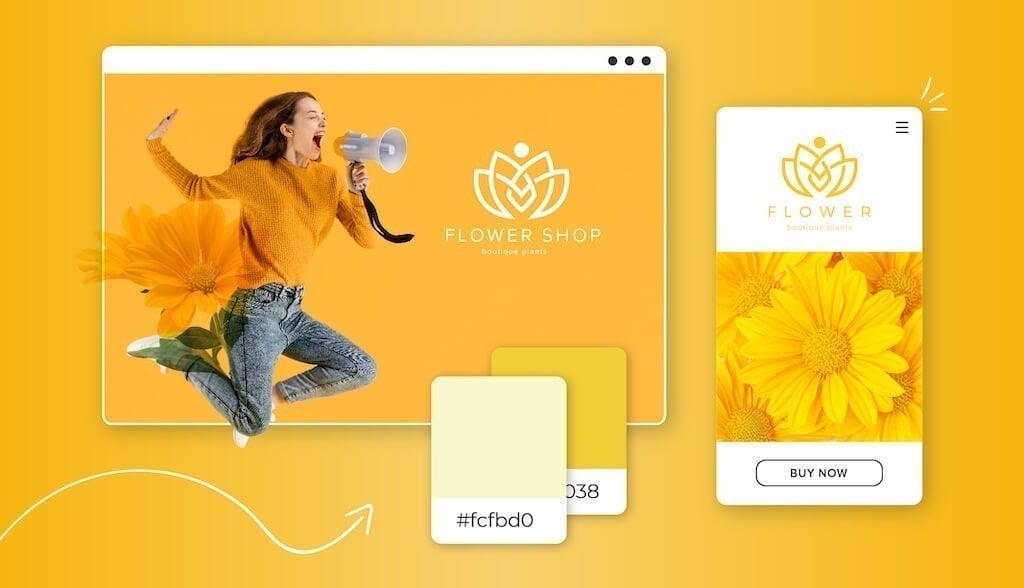
Selecting the color for your business’s logo is a big decision worth putting thought into. If you’re currently stressing over the decision, don’t worry! You’re not alone.
By the end of this post, you’re going to know if yellow is right for your logo–and if not, you can at least scratch it off your list and move on to the next option.
In general, your logo color will help send your audience a bunch of subconscious messages–so in this post, I’m going to help you determine whether or not yellow is packed with the right messages for your specific business.
We’ll cover the psychology of the color yellow, what it means when it’s paired with other colors and logo styles, the different industries that benefit from a yellow logo, and more. Let’s help you decide if yellow is right for you!
Colors have a significant influence on our behavior, mood, and even physiological reaction. That being said, color associations are strongly dependent on culture, personal experiences, and upbringing—color meaning is not one-size-fits-the-crayon-box.
If you want your logo to express attributes like optimism, joy, adventure, courage, nature, playfulness, and more, yellow is the color for you. For example, consider how both Bumble and Snapchat are about putting yourself out there and having fun.
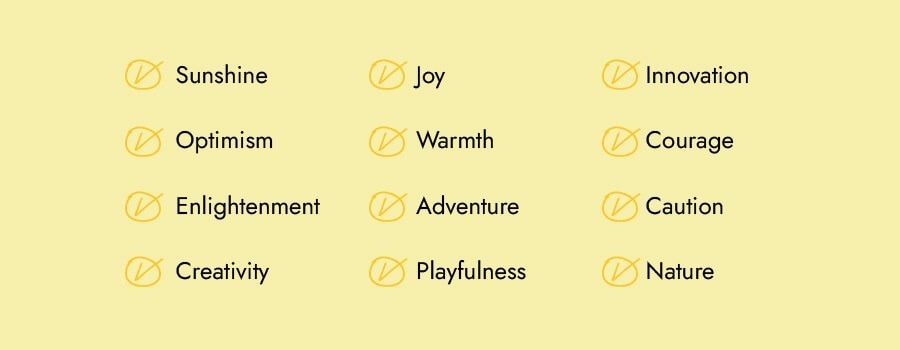
Yellow can also convey innovation and caution, which makes it the perfect color for Cat’s logo. As a globally recognized symbol for superior quality and reliability, the yellow triangle icon has come to symbolize hard work and a get-it-done attitude.
As you can see, there are different ways you can use yellow to help send your specific message to your audience.
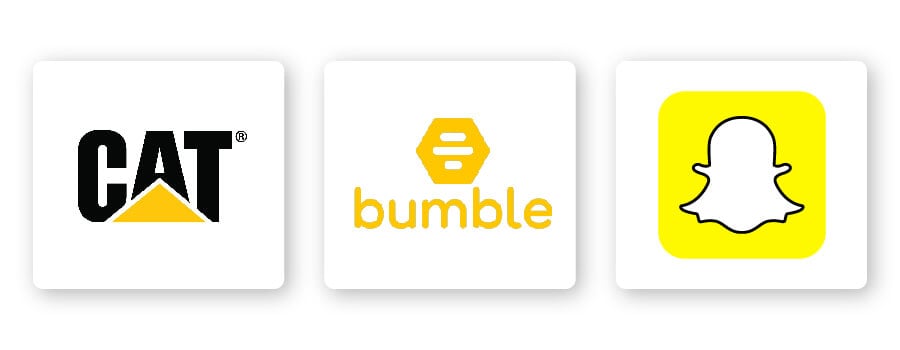
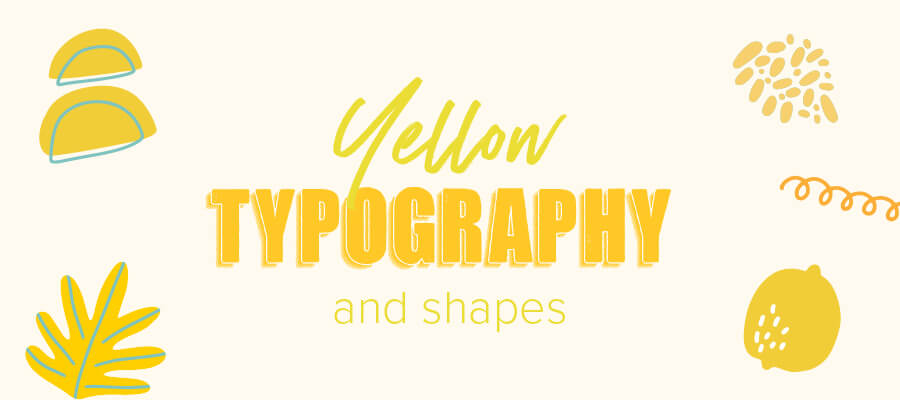
When it comes to yellow logos, there are certain design elements that combine well and those that don’t.
Choosing the right typography in your logo could bolster your overall brand. Review the 5 main font families to determine which one suits your brand best.
Serif – Great choice for brands that want to be seen as trustworthy, established, and reliable. Nirvana’s logo is a great example of pairing a serif font with yellow. The yellow evokes energy and warmth, making the traditional font look stunning and memorable.
Sans-serif – Casual, easy to read, and modern, sans-serif is a popular choice among start-ups, tech businesses, and restaurants such as Subway. Brands that want to appear more youthful and relatable would benefit from pairing sans-serif fonts with the color yellow.
Slab serif – Bold and impactful, slab serif fonts are frequently used by car and technology companies. Mostly, slab serifs are fun and make an audience feel happy, especially when used with yellow.
Script – Well-suited for businesses that want to express elegance and add a personal touch, such as photographers, coaches, or any family-owned brand. Although it isn’t really popular to use script font with yellow, it’d be a nice pairing if you want to express femininity and creativity.
Decorative – This is a font that’s loud, fun, and entertaining, which pairs perfectly with yellow! These fonts are flexible enough to let companies decide which emotion to focus on.
Of course, these are just general rules, but by no means are they set in stone. Feel free to play around with different font combinations.
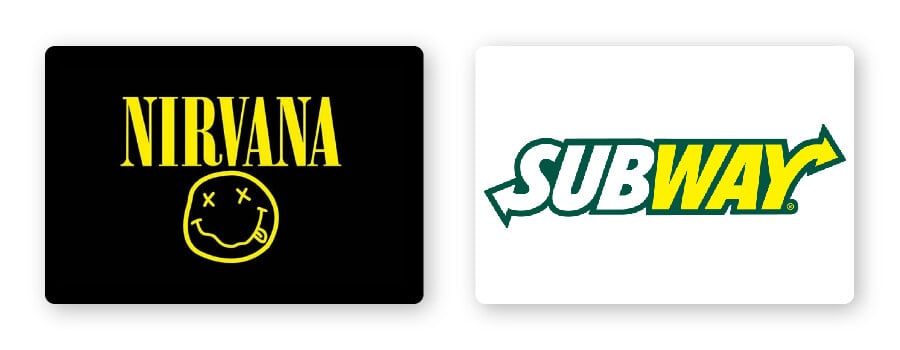
In your logo design, different shapes can help forge an emotional and psychological connection between your brand and consumers. It’s important to understand what each shape says about your brand and how you can effectively incorporate them into your design.
Triangles paired with yellow can create a sense of action and activity. Cat’s logo expresses these traits by placing the yellow triangle icon in a way that it’s cutting through the letters to illustrate the work their machines do.
Businesses choose an emblem logo to create a vintage vibe while appearing well-established and prestigious. This type of logo is an excellent choice for modern businesses that want to convey trustworthiness, dependability, and tradition. UPS, for example, chose an emblem to pay homage to their roots and reflect these traits through their logo.
In logo design, an icon is a symbol that conveys values and ideas that are immediately recognizable. Many brands choose to use animal logo icons because animal imagery can cement their values and characteristics in their audience’s eyes, such as Mailchimp’s monkey icon. Freddie’s always winking because he has a great attitude and that positivity is only amplified when paired with yellow.
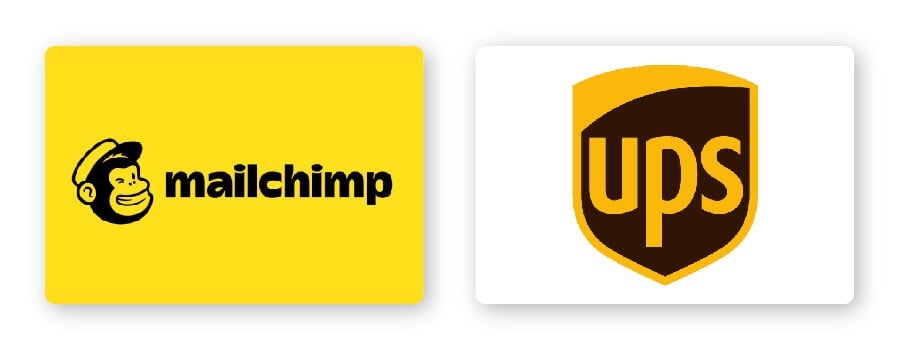
Like I mentioned before, colors are subjective and there’s no right or wrong way to use yellow in a logo.
That being said, you should use yellow if it aligns with one of the messages/values of your brand. Or, you can use yellow to differentiate yourself from competitors’ logos.
If your brand falls under one of these industries, here are a few ideas for how to use yellow:
When you think of yellow in relation to construction brands, you probably think of high-visibility safety helmets. Many construction companies use yellow since it’s a bold color and is often associated with building work, road signs, and safety equipment.
Yellow creates create enthusiasm for life and can revive a sense of playfulness, confidence, and optimism. These attributes make yellow the perfect color for dating brands like Bumble.
Yellow is second to red when it comes to food brand logo colors. Think of just a few iconic food brands like McDonald’s, Lay’s, and Lipton—each incorporate yellow into their logo design. That’s no coincidence! Yellow is refreshing, sunny, and invigorating enough to maybe make you hungry.
From dating apps to logo maker apps, technology is a permanent fixture in our lives that can bring us joy and creativity If you’re in the tech business, consider using a yellow logo to help your target audience connect your brand with those happy traits.
Entertainment businesses aim to make their viewers feel happy, lively, and excited. What better color to do that than yellow? For example, 20th Century Fox Television’s logo is primarily a gold-yellow color conveying a sense of power, innovation, and creativity.
Logistics brands need to tell customers that they’re fast-paced, hard working, and friendly all through their logo. If you take DHL as an example you’ll see that they’re able to express those core traits through their yellow logo.
It’s important to note that no one color fits in a box. Take a look at what competitors in your industry are doing and if the color yellow is too commonly used. If it’s overdone, you might think of using an alternative color to stand out. But if it isn’t used enough, ask yourself if the psychology of the color will work for your brand before choosing it.
Yellow can be pretty versatile depending on the colors you combine it with. Let’s take a look at some examples of yellow logo color combinations:
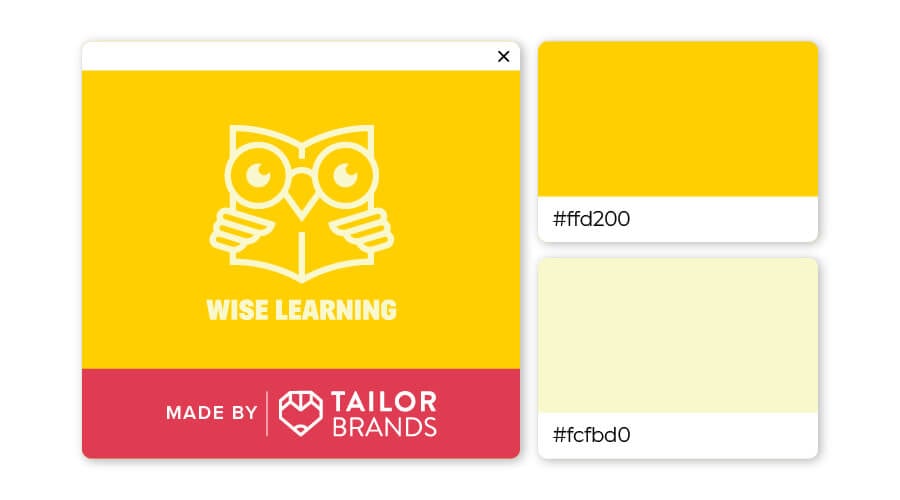
Layering different shades of the same color is such a good look, and when it’s yellow it gives off such a happy yet cozy vibe. Rather than looking one-dimensional, using a lighter and darker shade of yellow gives the design depth.
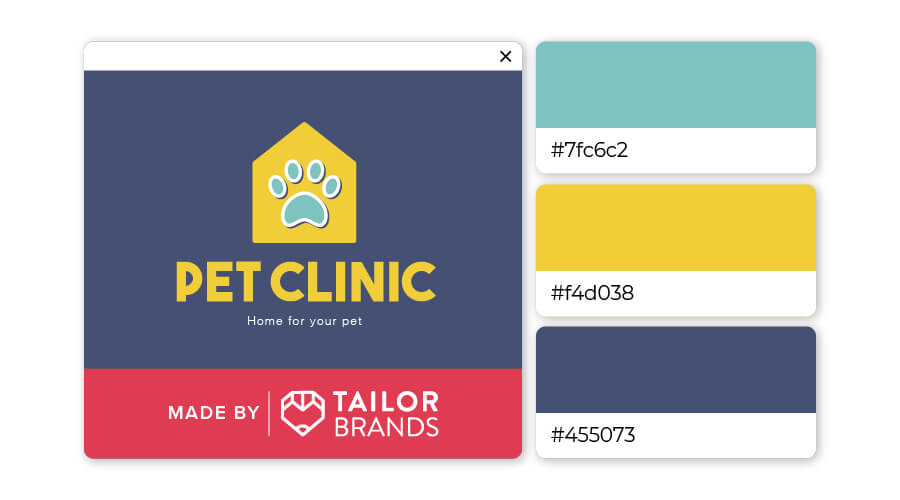
This design takes 2 primary colors and adds their secondary into the mix to create a perfect match! The mustard-yellow set atop the navy blue keeps the logo grounded yet playful, while the seafoam green brings a touch of nature to the overall design.
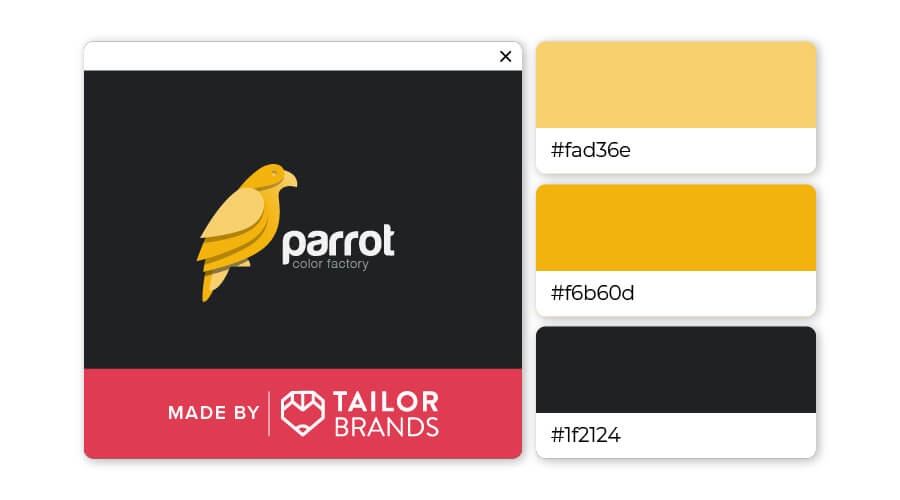
Black and yellow is a classic pairing that evokes feelings of energy, intrigue, and sophistication. Joyful yellow interacts well with powerful black, creating a logo that will make your logo stand out from the crowd.
You can check out this video to learn more about how color psychology affects people and what it means for you when you’re ready to design your own logo (skip ahead to 4:37 to learn about yellow).
We’ve seen that yellow conveys creativity, playfulness, and courage, among others, but combining it with other design elements can lead to an impactful and unique logo.
If you are considering yellow as a primary color for your brand’s logo, try out Tailor Brands’ logo maker to create yours!
This portion of our website is for informational or educational purposes only. Tailor Brands is not a law firm, and the information on this website does not constitute legal advice. All statements, opinions, recommendations, and conclusions are solely the expression of the author and provided on an as-is basis. Accordingly, Tailor Brands is not responsible for the information and/or its accuracy or completeness. It also does not indicate any affiliation between Tailor Brands and any other brands, services or logos on this page.
Products
Resources
©2025 Copyright Tailor Brands